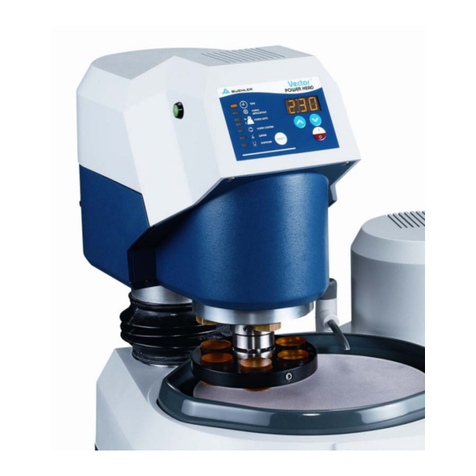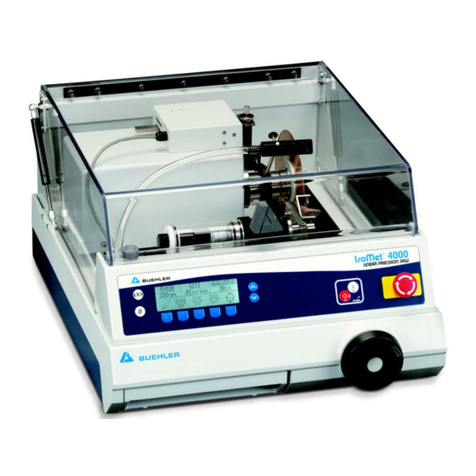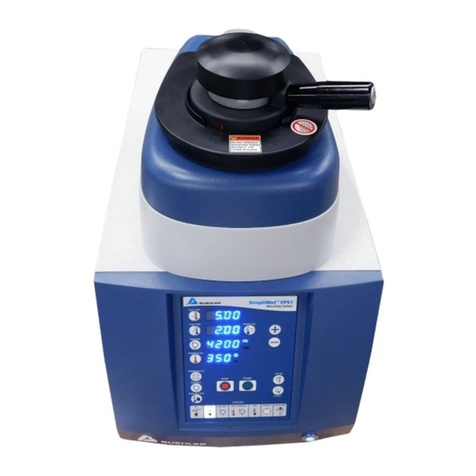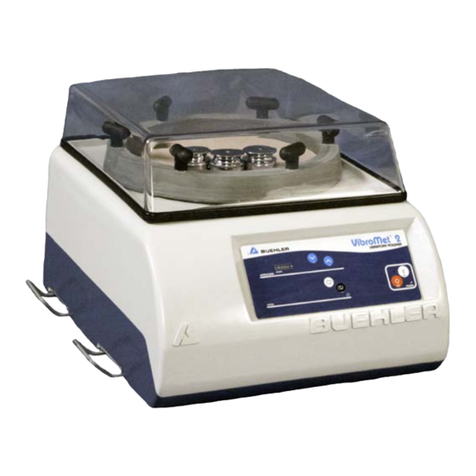
BUEHLER SIMPLIMET 1000 AUTOMATIC MOUNTING PRESSES
3
Operation
Instrument Operation
1. Turn on the machine by pressing the gray power button on the control console.
2. Use the blue arrow buttons to raise the ram so that you can place your sample on it.
3. If necessary, use the sample clips to position your sample on the platform, desired
examination surface facing down.
4. Lower the ram about 2 inches, and fill the chamber with a full scoop of the phenolic resin
powder.
5. If preparing two samples: Insert the divider (stainless steel disk) in the chamber. Repeat steps 3
and 4 for your second sample.
6. Close the lid (push down) and rotate clockwise to lock. If you have difficulty closing and
locking the lid, try pushing down while rotating, or lowering the sample stage a little bit more.
7. Set the mounting parameters by pressing the white button on the left.
•If you are mounting with phenolic powder, the following settings are recommended:
•Temperature = 150 ºC
•Pressure = 290 bar
•Heat Time = 1 minute for samples <2” thick, 2 minutes for ≥2”
•Cool time = at least 3 minutes
•For other mounting media, consult the machine’s instruction booklet or your
professor.
8. When the mounting cycle is complete, rotate the lid to unlock it. The lid may not
immediately pop open. If this is the case, do not try to force it open. Instead, simply raise
your sample stage, which should safely force the lid open. Remove your sample with tongs
or using gloves. Be careful, the sample will be hot.
9. Turn off the machine.
Helpful Hints
1. Be sure you pour enough phenolic mounting powder into the chamber to provide for easy
holding during subsequent grinding and polishing. Finished samples should be about ½” to
¾” in height. If your mounted sample is too thin, it will make polishing and grinding more
difficult.
2. If mounting a very stable object that is unlikely to move or tip over during pressure
application, using a phenolic pre-mold is easier than measuring out the necessary amount of
powder.
3. Transparent and conductive mounting compounds are available. Mounting with these
powders is more difficult, so they should only be used when necessary.
2

























